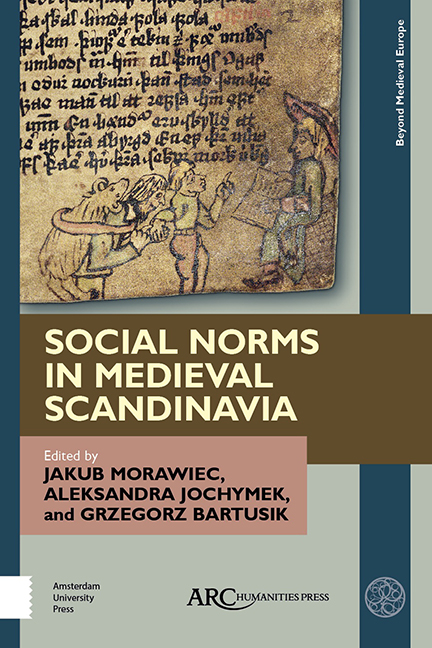Chapter 11 - A Deviant Word Hoard: A Preliminary Study of Non-Normative Terms in Early Medieval Scandinavia
Published online by Cambridge University Press: 20 November 2020
Summary
NORMS, NORMATIVITY, AND the transgression thereof have long been topics of special interest in the social sciences; however, these studies routinely demonstrate an inherent fluidity between normativity and deviance, making the study of either in isolation problematic. For this reason, deviance and normativity are most often considered together, due to the manifold ways that understandings of one naturally aids understanding the other. From the perspective of language, this is in fact not especially surprising as concepts tend to be most easily defined by what they are not, rather than what precisely they are. This fluidity of understandings of deviance and normativity is highly visible in many Old Norse texts as well and recently the study of norms, normativity, and deviance in these texts has enjoyed a certain vogue, not the least demonstrated by the present collection of papers. However, examinations of this normative fluidity are few and far between, as are lexical and semantic studies of the terms used to delineate non-normative behaviours, which highlights a problematic hole in our understandings of the contemporary associations around these terms. The present paper will proceed by conducting an examination of select lexical choices in medieval Scandinavian texts to better understand the contemporary web of associations surrounding non-normative and transgressive behaviours.
That said, a simple working definition of these key concepts that acknowledges the fluidity between them is required before moving forward. Simply put, normativity can be understood as the degree to which specific behaviour aligns with a particular norm or norm-set. Consequently, at the most basic level, non-normative and deviant behaviour can be understood as behavioural transgressions of expected norms.
This definition of normativity on one hand and deviance on the other likely brings to mind several of the structuralist studies of the “Old Norse worldview,” with normativity and deviance forming a “related opposition,” a binary pair of concepts used to construct meaning. In fact, a normative population and the non-normative people perceived to be on its fringes could conceivably be conceptualized as mere synonyms to Kirsten Hastrup's social categories in her study: “us”and “the others.” However, the picture is, in fact, much more complicated. Hastrup's model has been much discussed since its first formulation and some key critiques have been put forward.
- Type
- Chapter
- Information
- Social Norms in Medieval Scandinavia , pp. 201 - 212Publisher: Amsterdam University PressPrint publication year: 2019

